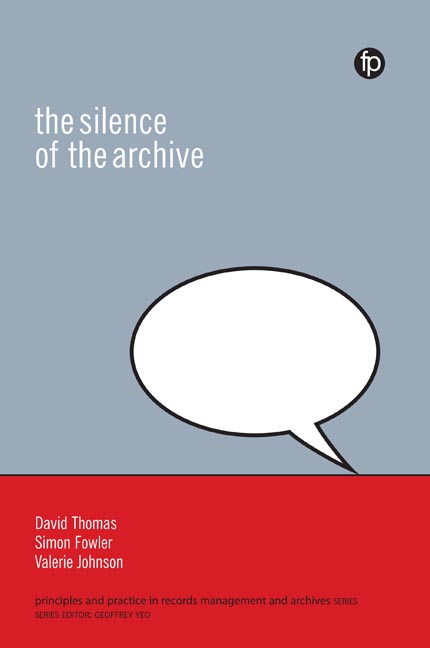Book contents
5 - Imagining archives
Published online by Cambridge University Press: 08 June 2018
Summary
Introduction
How have researchers responded to the absence or inaccessibility of archives? This chapter describes a range of possible responses. Some have simply imagined the missing records, while others have gone further and fictionalized them, producing novelistic accounts or even virtual-reality versions of what might have existed. Writers on the slave trade who suffer from an almost total lack of written sources about individual slaves are well known as users of these approaches. Going far beyond fictionalization, others have forged documents to make up for silences. The most famous example of missing information is that of Shakespeare. Although a great deal is known about the basic facts of his life, scholars and others have been disappointed at the lack of personal and emotional detail and their responses have ranged from a simple and harmless fictionalization – for instance calling a book Shakespeare's Local – to outright and deliberate forgery. The fact that archives can be imagined, fictionalized, faked or forged tells us something of significance about their meaning and this will be discussed at the end of the chapter.
Imagining archives
Anne Gilliland and Michelle Caswell of UCLA have discussed (2016) what happens when archives are either closed or are absent and where the response of individuals or groups of individuals has been to imagine the contents of the unattainable material. They describe the impact of the deaths of the former Khmer Rouge Deputy Prime Minister, Ieng Sary, and former Serbian President, Slobodan Milosevic, during the course of their trials for crimes against humanity and war crimes. In the absence of trials and, in the case of Ieng Sary, lost testimony, a form of never-actualized record was created in the minds of their victims and possibly a wider public. Such imagined records can never be cross-examined or provide the basis for a conviction.
There are a number of cases where the contents of caches of closed records have been imagined and this has led to public pressure for access.
- Type
- Chapter
- Information
- The Silence of the Archive , pp. 117 - 140Publisher: FacetPrint publication year: 2017
- 1
- Cited by



